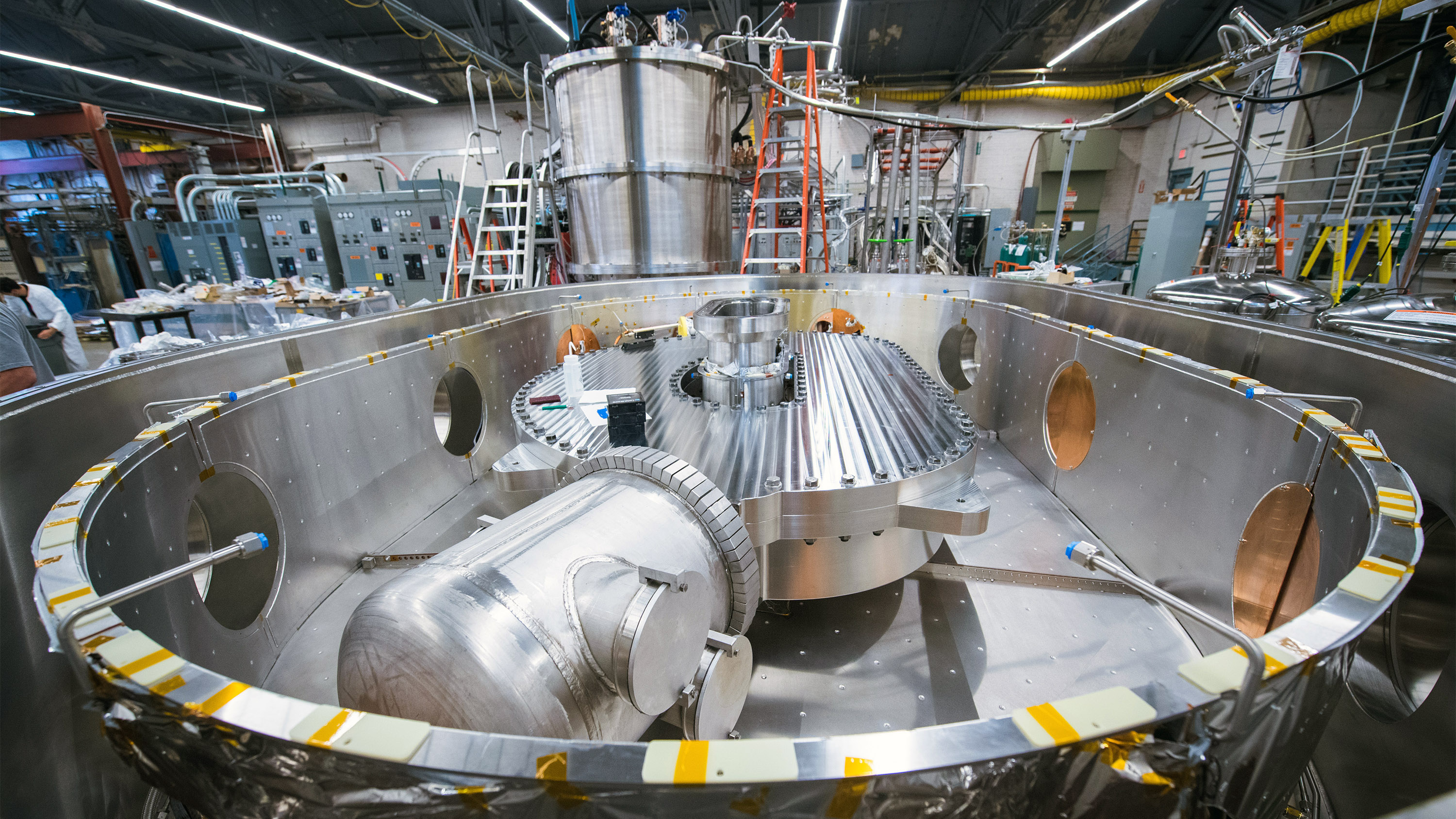A detailed study confirms that record-setting magnets built by the Plasma Science and Fusion Center and Commonwealth Fusion Systems meet the requirements for an economical, compact power plant.

In MIT’s Plasma Science and Fusion Center, the new magnets achieved a
field strength of 20 tesla, a world record for a large-scale magnet.
GRETCHEN ERTL
Harnessing nuclear fusion, the process by which lighter atoms combine into heavier ones, has been a dream of researchers for generations: in theory, it could produce electricity without emitting greenhouse gases and, unlike nuclear fission, generate very little radioactive waste.
But making fusion work requires compressing hydrogen plasma fuel at extraordinarily high temperatures and pressures—and since no known material can withstand such temperatures, the fuel must be held in place by extremely powerful magnetic fields.
Now detailed reports by researchers at MIT’s Plasma Science and Fusion Center (PSFC) and the MIT spinout company Commonwealth Fusion Systems (CFS), published in a collection of six peer-reviewed papers in a special edition of IEEE Transactions on Applied Superconductivity in March, confirm that a new type of magnet the team tested in 2021 could make an economically viable fusion device far more likely. MIT engineering professor Dennis Whyte—who recently stepped down as director of the PSFC—calls the successful test “the most important thing, in my opinion, in the last 30 years of fusion research.”
Don’t settle for half the story.
Get paywall-free access to technology news for the here and now.
Subscribe now
Already a subscriber?
Sign in
MIT Technology Review provides an
intelligent and independent filter for the
flood of information about technology.
Subscribe now
Already a subscriber?
Sign in
The new magnet, made from high-temperature superconducting material, achieved a field strength of 20 tesla, a world record for a large-scale magnet. That’s the intensity needed to build a fusion plant producing more energy than it consumes, potentially ushering in an era of virtually limitless power production. Overall, the papers find, months of analysis, computer modeling, and testing verified that the magnet’s unique design elements could serve as the foundation for a such a plant. The experimental device it makes possible, called SPARC, is a collaboration with CFS and will be built in Devens, Massachusetts.
“When we started this project in 2018, the technology of using high-temperature superconductors to build large-scale high-field magnets was in its infancy,” says Zach Hartwig, a professor of nuclear science who leads the PSFC’s engineering group. Until the introduction of a new material known as REBCO, for rare-earth barium copper oxide, the best available magnets required such frigid temperatures that they were impractical to work with. REBCO, because it operates at slightly higher temperatures, makes it possible to contain plasma with magnets that—while still gigantic—are smaller and consume much less energy.
To take advantage of this new material, the team rethought superconducting magnet construction. An especially dramatic innovation, drawing skepticism from many others in the field, was that the magnet’s thin, flat ribbons of superconducting tape had no insulation to prevent short-circuits; the engineers relied on REBCO’s much greater conductivity to keep the current flowing.
After initial tests proved their setup worked, the researchers pushed the device to the limit by deliberately creating unstable conditions, including a worst-case scenario: a complete shutoff of incoming power that can lead to catastrophic overheating. Only one small area melted, and revisions in the design are expected to prevent such damage, even under the most extreme conditions.
When the tests showed the practicality of such a strong magnet at a greatly reduced size, “overnight, it basically changed the cost per watt of a fusion reactor by a factor of almost 40,” Whyte says.
“Now fusion has a chance.”




